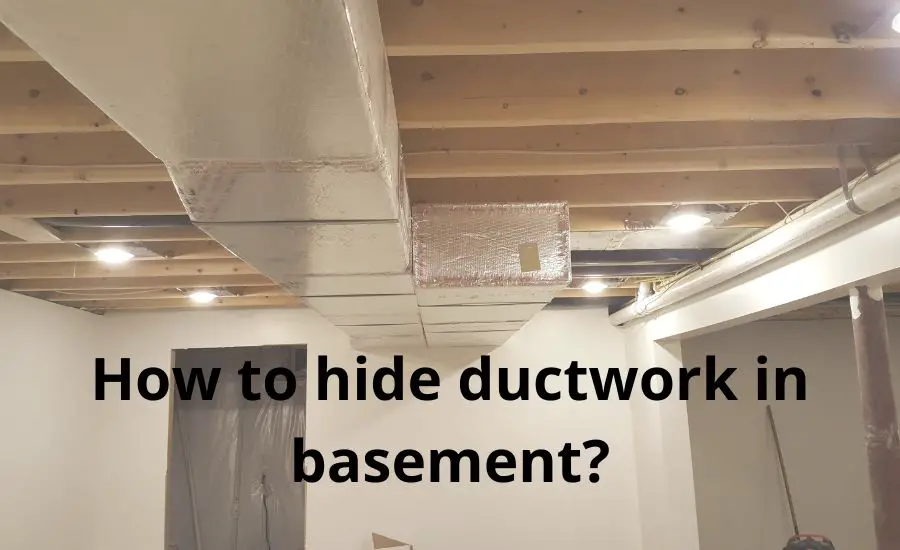Welcome to our guide on how to hide ductwork in your basement and transform your unfinished space into a stunning living area. Exposed ductwork can be an eyesore that can detract from the overall aesthetic of your basement.
However, with a few creative solutions, you can hide basement ductwork and create a focal point that complements the space.
The article explores various ways to incorporate ceiling framing, such as tray ceilings, false beams, and even create faux rafters to cover vertical ductwork.
We will also discuss the use of drop ceilings and acoustic ceiling tiles to hide ductwork, as well as paint sprayers for a seamless finish.
Additionally, we will provide tips on furniture placement and wall framing to maximize your basement space, including the addition of recessed wine refrigerators and pipe shutoff valves.
With our guide, you can easily hide ductwork in your basement and achieve a finished basement look that you’ll love.
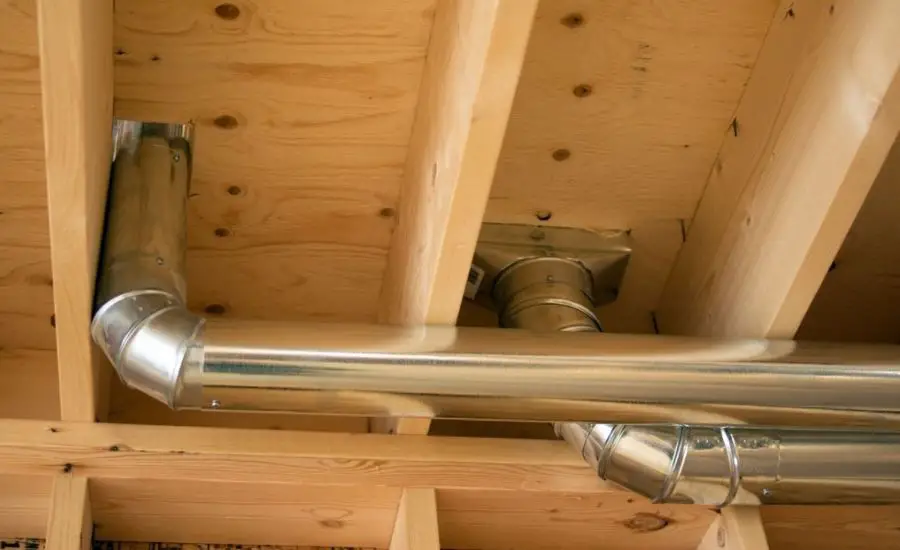
Contents
Necessary steps for hiding
If you have an unfinished basement with exposed ductwork, you might be wondering how to hide those unsightly metal tubes to create a more finished and cohesive living area.
- Install a drop ceiling: This is one of the most popular methods to hide ductwork in the basement. It involves installing a suspended ceiling below the entire ceiling of the basement. The suspended ceiling is composed of a thin metal frame and acoustic tiles that can be easily removed to access ductwork.
- Create a tray ceiling: A tray ceiling is another great option to hide vertical ductwork in your basement. It involves incorporating ceiling framing and wall framing to create a focal point in the ceiling.
- Use faux rafters: Rafters can be used to cover traditional metal ducts in the ceiling. They are made by placing false beams between the floor joists and painting them to match the basement’s ceiling.
- Place acoustic tiles: If you want to keep the exposed ductwork in your basement, you can still minimize their visual impact by placing acoustic tiles around them. Make sure the tiles correspond to the walls of the basement and that they are installed properly.
- Utilize furniture placement: Finally, strategically placing furniture in your basement can help hide exposed ductwork. For example, you can position a bookshelf or a sofa against a wall where the ductwork is located to conceal it from view.
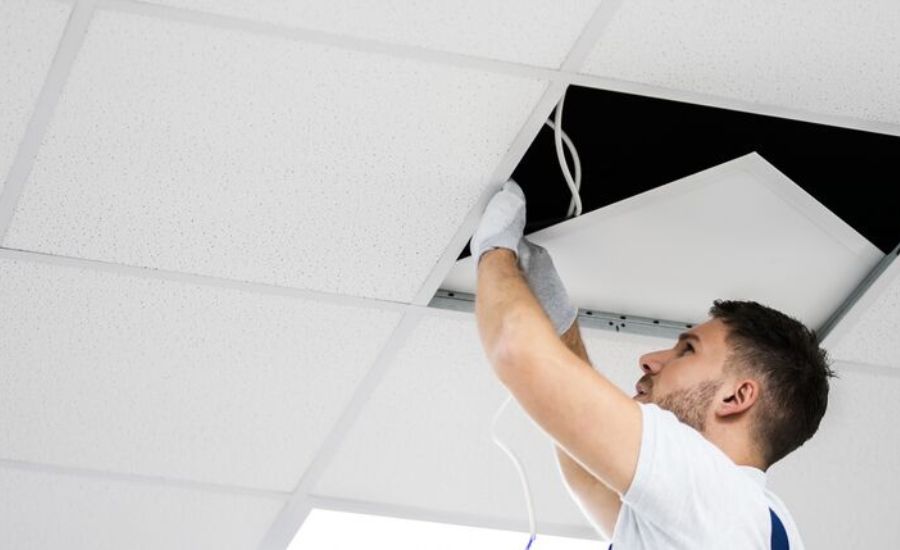
Benefits of concealing ductwork in a basement
Concealing ductwork in a basement has a number of benefits beyond simply improving the aesthetics of the space.
One of the main advantages is that it allows homeowners to create a more functional living area in the basement without the visual distraction of exposed ductwork.
With ductwork hidden, homeowners can opt for a drop ceiling or tray ceiling that can be painted to blend in with the entire ceiling, creating a cohesive look.
Alternatively, the exposed floor joists can be incorporated into the design to create faux rafters, giving the space an industrial or rustic feel.
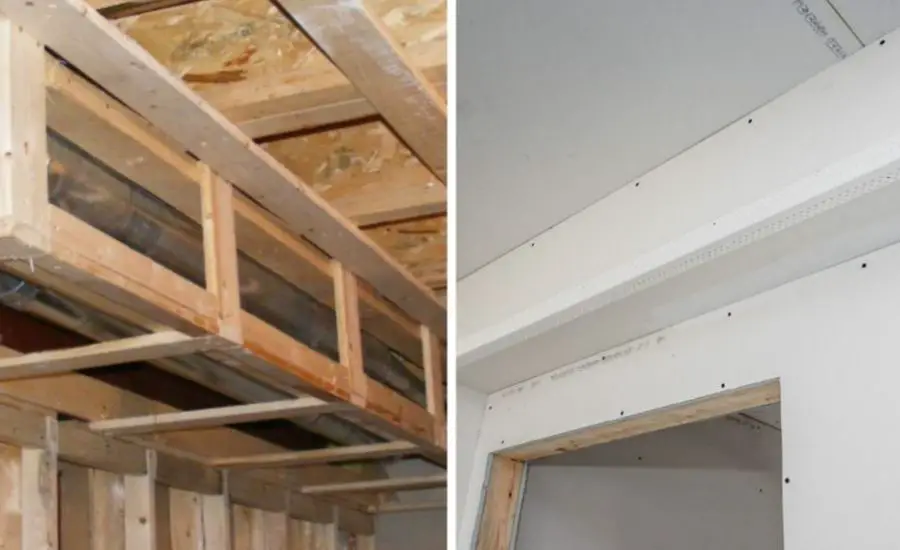
Optional avails
Additionally, concealing ductwork can allow for the creation of a more efficient HVAC system, as it eliminates the need for a duct installer to work around pre-existing ceiling ductwork.
By incorporating ceiling framing that matches the walls, homeowners can create a seamless transition from the walls to the ceiling, making the space feel more like a true extension of the living area above.
Drop ceilings typically offer the easiest option for concealing ductwork, but with a paint sprayer, an unfinished basement ceiling can be transformed into a beautiful focal point.
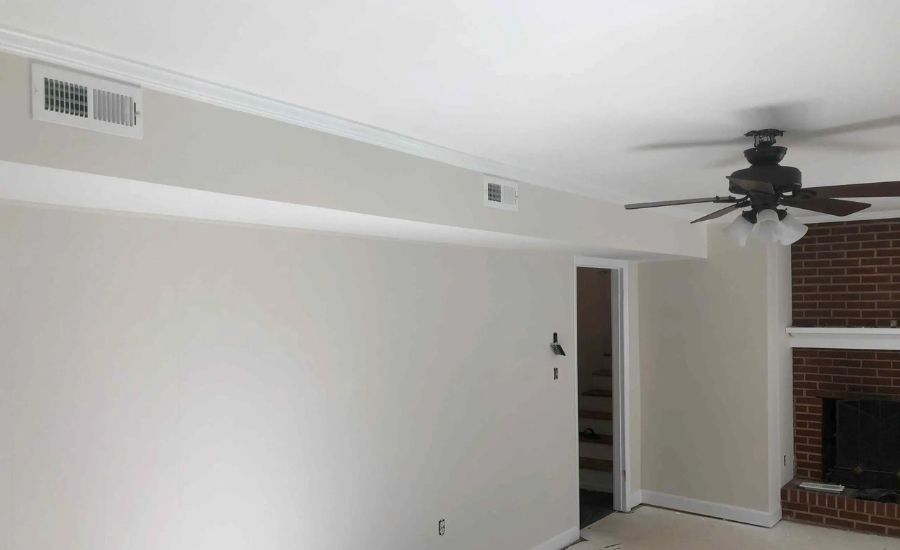
Tools and materials needed
When it comes to concealing ductwork in a basement, there are a number of tools and materials you’ll need to ensure a professional-looking finish.
One of the most popular methods of concealing ductwork is by installing a drop ceiling.
This not only conceals the ductwork but also creates a finished look for the ceiling. You’ll also need a paint sprayer to ensure a consistent and smooth finish on any exposed ductwork that can’t be hidden.
When planning to hide ductwork, it’s important to consider the living space where the ductwork is located. Make sure that the design of your ceiling or walls correspond with the style of the living area.
You want to create a seamless transition between the hidden ductwork and the rest of the basement. It’s also essential to bear that not all ductwork can be hidden. Some may require access for maintenance or repair purposes, ensure to consult a duct installer fixed.
Secondary materials
In addition to drop ceilings and paint sprayers, other tools and materials you may need include drywall, metal studs, insulation, and duct tape.
The drywall and metal studs are used to create a frame for the drop ceiling or to build a false wall to conceal the ductwork.
Insulation helps to reduce the noise from the ductwork, while duct tape is used to seal any leaks or gaps in the ductwork.
Concealing ductwork in a basement can be a challenging but rewarding DIY project. By utilizing the right tools and materials and consulting a professional when needed, you can create a clean and polished look for your living space while keeping your ductwork out of sight.
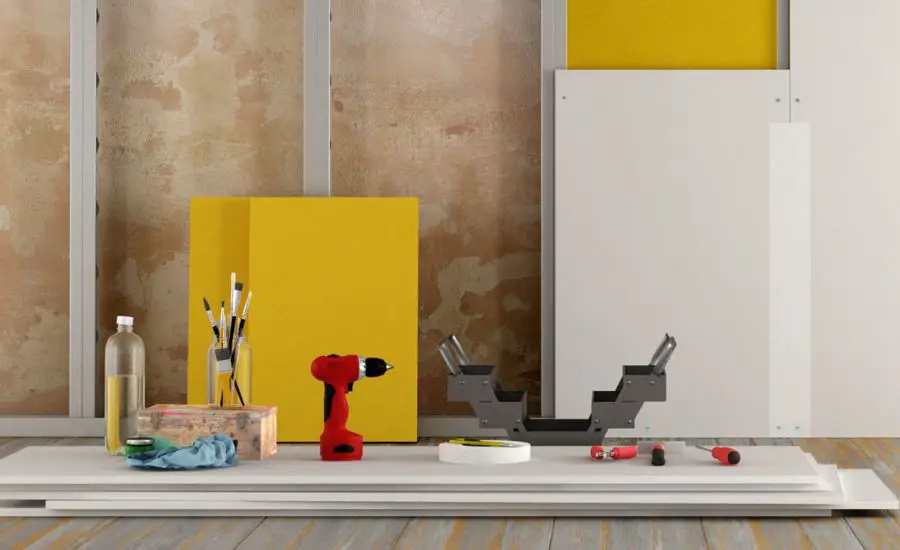
How to work around obstacles
When it comes to hiding ductwork in a basement, obstacles can pose a challenge. However, there are ways to work around them. One option is to incorporate the ceiling framing to create a soffit for the ductwork. Another option is to place acoustic ceiling tiles over the ductwork to hide it while also reducing noise.
Additionally, consider how the walls correspond with the ceiling when planning ductwork placement. By working creatively around obstacles, you can successfully hide ductwork and create a more visually appealing space in your basement.
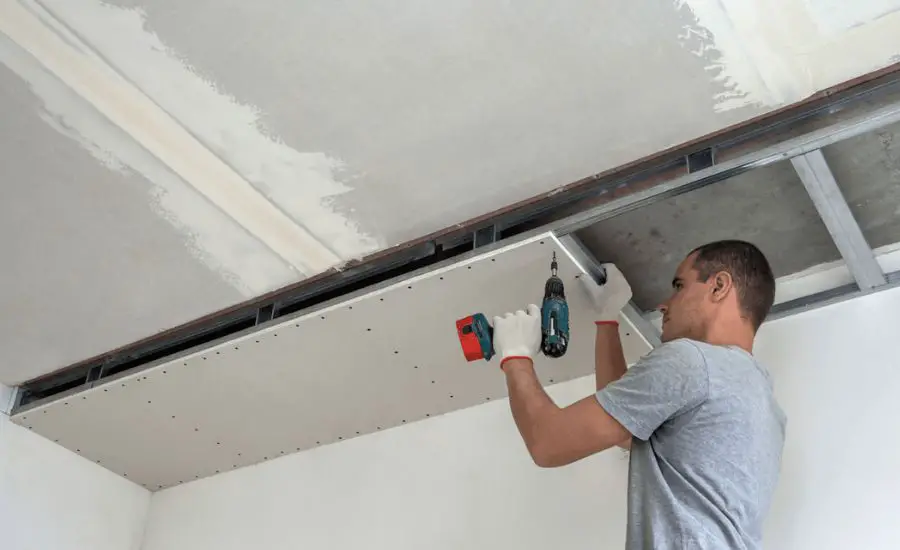
Cost-effective solutions
One cost-effective solution to hide ductwork in a basement is to incorporate ceiling framing.
This involves installing a suspended ceiling, which not only conceals the ductwork but also adds an aesthetic appeal to the basement.
Incorporating ceiling framing also allows for easy access to the ductwork when necessary, reducing the need for costly repairs in the future.
It is a smart investment that can transform a cluttered basement into a comfortable living space while adding value to your home.
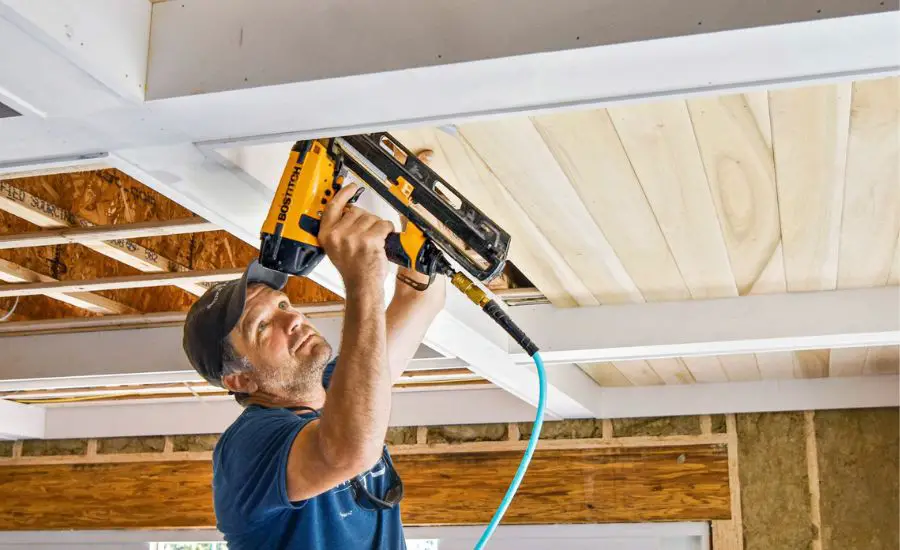
Conclusion
Hiding ductwork in the basement can be a challenging but worthwhile home improvement project. With the guidance and tips provided, homeowners can effectively camouflage and conceal unsightly ductwork, creating a more aesthetically pleasing living area.
Whether utilizing creative design elements or more practical solutions, such as painting or using decorative screens, concealing ductwork in the basement is a worthwhile investment for any homeowner looking to improve the overall look and feel of their home.
FAQ
How do you make exposed ductwork look good?
You can make exposed ductwork look good by painting it to match the ceiling, adding a cover or enclosure, or using decorative materials to blend it in with the rest of the space.
Does ductwork in a basement need to be insulated?
It’s recommended to insulate ductwork in a basement to prevent heat loss, reduce noise, and prevent condensation.
Can you move HVAC ducts in basement?
It’s possible to move HVAC ducts in a basement, but it’s a complex process that requires professional expertise and can be costly. It’s important to weigh the benefits and drawbacks before making a decision.
Learn More: How to Hide Ducts in a Basement

